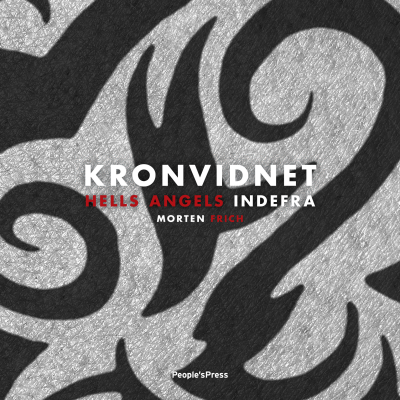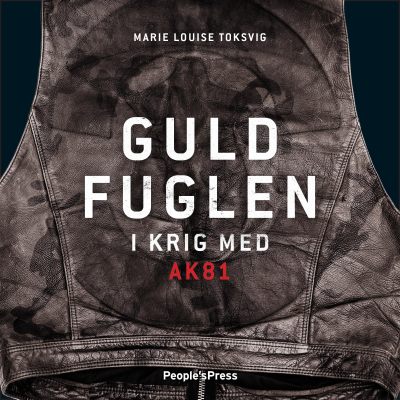
Cardiology Trials
Podcast af Cardiology Trials
An exploration of pivotal clinical trials in cardiovascular medicine that have significantly influenced the field. This podcast aligns with our publications on the Cardiology Trial's Substack. cardiologytrials.substack.com
Prøv gratis i 7 dage
Efter prøveperioden kun 99,00 kr. / måned.Ingen binding.
Alle episoder
109 episoderN Engl J Med 2005;353:1095-1104 [https://www.nejm.org/doi/full/10.1056/NEJMoa044259] Background: Prior trials on revascularization in patients with acute coronary syndromes without ST-segment elevation have yielded mixed results. While FRISC II [https://www.thelancet.com/journals/lancet/article/PIIS0140-6736(99)07349-3/abstract] and TACTICS-TIMI 18 [https://cardiologytrials.substack.com/p/review-of-the-tactics-timi-18-trial] demonstrated a significant reduction in myocardial infarction, this benefit was not observed in RITA 3 [https://cardiologytrials.substack.com/p/review-of-the-rita-3-trial]. None of these trials showed a significant reduction in mortality. Further research is needed to guide treatment strategies in this population, particularly after the introduction of early use of clopidogrel and intensive lipid-lowering therapy. Cardiology Trial’s Substack is a reader-supported publication. To receive new posts and support our work, consider becoming a free or paid subscriber. The Invasive versus Conservative Treatment in Unstable Coronary Syndromes (ICTUS) trial [https://www.nejm.org/doi/full/10.1056/NEJMoa044259] sough to test the hypothesis that an early invasive strategy is superior to selective invasive strategy for patients with non-ST elevation myocardial infarction (NSTEMI). Patients: Eligible patients had to have all of the following: Worsening symptoms of ischemia or symptoms at rest with the last episode being 24 hours before randomization, elevated cardiac troponin T level (≥0.03 μg per liter); and either ischemic EKG changes (defined as ST-segment depression or transient ST-segment elevation exceeding 0.05 mV, or T-wave inversion of ≥0.2 mV in two contiguous leads) or a documented history of coronary artery disease. Patients were excluded if they were older than 80 years, had an indication for primary percutaneous coronary intervention or fibrinolytic therapy, hemodynamic instability or overt congestive heart failure, oral anticoagulant drugs use in the past 7 days, fibrinolytic treatment within the past 96 hours, percutaneous coronary intervention within the past 14 days, elevated bleeding risk, plus others. Baseline characteristics: The trial randomized 1,200 patients from 42 Dutch hospitals – 604 randomized to early invasive strategy and 596 randomized to selective invasive strategy. The average age of patients was 62 years and 74% were men. Approximately 39% had hypertension, 14% had diabetes, 35% had hyperlipidemia, 23% had prior myocardial infarction and 41% were current smokers. Approximately 48% of the patients had ST deviation equal to or greater than 0.1 mV. Procedures: Patients were randomly assigned in a 1:1 ratio to undergo early invasive vs selective invasive strategy. Patients received 300 mg of aspirin at the time of randomization, followed by at least 75 mg daily indefinitely, and enoxaparin (1 mg/kg for a maximum of 80 mg) subcutaneously twice daily for at least 48 hours. The early use of clopidogrel (300 mg immediately, followed by 75 mg daily) in addition to aspirin was recommended to the investigators after the drug was approved for acute coronary syndrome in 2002. Intensive lipid-lowering therapy, preferably atorvastatin 80 mg daily or the equivalent was recommended as soon as possible after randomization. All interventional procedures during the index admission were performed with the use of abciximab. Patients assigned to the early invasive strategy were scheduled to undergo angiography within 24 - 48 hours after randomization. Patients assigned to the selective invasive strategy underwent coronary angiography if they had refractory angina despite optimal medical therapy, hemodynamic or rhythm instability, or significant ischemia on pre-discharge exercise test. In both groups, percutaneous coronary intervention (PCI) was performed when appropriate, without providing more details in the manuscript. The level of creatine kinase MB was measured at 6-hour intervals during the first day, after each new clinical episode of ischemia, and after each percutaneous revascularization procedure. Endpoints: The primary endpoint was a composite of all-cause death, myocardial infarction, or rehospitalization for angina at 1-year. The estimated sample size to provide 80% power to detect 25% relative risk difference between the two treatment groups at 5% alpha was 1,200 patients. This assumed that 21% of the patients in the early invasive arm would experience the primary outcome. Results: During the index admission, 98% of the patients in the early invasive strategy arm underwent coronary angiogram compared to 53% in the selective invasive arm. At 1-year, 79% of the patients in the early invasive strategy arm underwent revascularization compared to 54% in the selective invasive arm. The primary outcome was not significantly different between both treatment groups (22.7% with early invasive vs 21.2% with selective invasive, RR: 1.07; 95% CI: 0.87 - 1.33; p= 0.33). All-cause death was the same in both groups (2.5%). Myocardial infarction was significantly higher with the early invasive strategy (15.0% vs. 10.0%, RR: 1.50, 95% CI: 1.10 – 2.04; p= 0.005), while rehospitalization for angina was lower with early invasive (7.4% vs. 10.9%, RR: 0.68, 95% CI: 0.47 – 0.98; p= 0.04). Most myocardial infarctions were revascularization related and these were significantly more frequent with early invasive (11.3% vs 5.4%). Spontaneous myocardial infarctions were 3.7% with early invasive and 4.6% with selective invasive and this was not statistically significant. Major bleeding, not related CABG, during the index admission was more frequent with the early invasive strategy (3.1% vs 1.7%). There were no significant subgroup interactions for the primary outcome, including based on ST deviation and troponin levels. Conclusion: In patients with NSTEMI, an early invasive strategy was not superior to selective invasive strategy in reducing the composite endpoint of all-cause death, myocardial infarction, or rehospitalization for angina at 1-year. An early invasive strategy was associated with more myocardial infarctions with a number needed to harm of 20 patients, which was secondary to revascularization related myocardial infarction. An early invasive strategy reduced rehospitalization for angina with a number needed to treat of approximately 29 patients. The ICTUS trial showed that revascularization can cause harm and highlighted how counting procedural myocardial infarctions can influence outcome estimates. While there is ongoing debate about the significance of periprocedural myocardial infarctions, evidence indicates an association with increased mortality. Whether periprocedural myocardial infarctions are 'less severe' than spontaneous myocardial infarctions remains controversial, as their impact varies based on infarct size and patient characteristics. This underscores the importance of including all-cause mortality or advanced systolic heart failure as endpoints in trials of revascularization. Patients in ICTUS received better background medical therapy compared to prior trials in this area. While this could be responsible for the divergent results compared to other prior trials. It also highlights the heterogeneity of NSTEMI patients and that an invasive strategy is not appropriate for all. Cardiology Trial’s Substack is a reader-supported publication. To receive new posts and support our work, consider becoming a free or paid subscriber. Get full access to Cardiology Trial’s Substack at cardiologytrials.substack.com/subscribe [https://cardiologytrials.substack.com/subscribe?utm_medium=podcast&utm_campaign=CTA_4]
The Lancet 2002;360:743-751 [https://www.thelancet.com/journals/lancet/article/PIIS0140-6736(02)09894-X/abstract] Background: The TACTICS-TIMI 18 [https://cardiologytrials.substack.com/p/review-of-the-tactics-timi-18-trial] trial showed that an early invasive strategy in beneficial in selected patients with unstable angina or non-ST-elevation myocardial infarction (NSTEMI). These positive findings contrasted the findings from some earlier studies. Cardiology Trial’s Substack is a reader-supported publication. To receive new posts and support our work, consider becoming a free or paid subscriber. The British Heart Foundation RITA 3 randomized trial [https://www.thelancet.com/journals/lancet/article/PIIS0140-6736(02)09894-X/abstract] sought to compare invasive vs conservative strategy in patients with unstable angina or NSTEMI, similar to the trial question of TACTICS-TIMI 18. Patients: Eligible patients had suspected cardiac chest pain at rest with at least one of the following: Evidence of ischemia on electrocardiogram (ST depression, transient ST elevation, old left bundle branch block, or T wave inversion), pathologic Q waves suggesting previous myocardial infarction, or documented coronary artery disease on prior coronary angiogram. Patients were excluded if they had evolving myocardial infarction in which reperfusion therapy was indicated. Patients were also excluded if creatine kinase or creatine kinase MB concentrations were twice the upper limit of normal before randomization, if they had myocardial infarction within a month, had percutaneous coronary intervention (PCI) in the previous 12 months, or coronary artery bypass grafting (CABG) at any time. Baseline characteristics: The trial randomized 1,810 patients – 895 randomized to the invasive strategy and 915 randomized to conservative strategy. Patients were recruited from 45 hospitals in England and Scotland. The average age of patients was 63 years and 62% were men. Approximately 35% had hypertension on drugs, 13% had diabetes and 28% had prior myocardial infarction. The majority (92%) of the patients were enrolled because they met the criteria for evidence of ischemia on electrocardiogram. Procedures: Patients were randomly assigned in a 1:1 ratio to undergo invasive vs conservative strategy. In the conservative arm, patients received aspirin and enoxaparin 1mg/kg subcutaneously twice a day for 2-8 days. Beta-blockers, other antiplatelets and glycoprotein IIb/IIIa inhibitors could also be used. Coronary angiography could be performed if patients had anginal symptoms at rest or with minimal exertion despite appropriate therapy or if they had ischemia on stress testing. Patients in the invasive strategy arm received similar medical therapy to the conservative arm. Coronary angiogram was to be performed as soon as possible after randomization and ideally within 72 hours. Revascularization was recommended for lesions of at least 70% stenosis or 50% or more if left main. Endpoints: The trial had two co-primary outcomes. The first was a composite of death from any cause, nonfatal myocardial infarction, or refractory angina at 4 months. The second was a composite of death from any cause or nonfatal myocardial infarction at 1 year. Analysis was performed based on the intention-to-treat principle. The estimated sample size to provide 80% power at 5% alpha, was 1,770 patients. This assumed that 12% of the patients in the conservative arm would experience the outcome of death or non-fatal myocardial infarction at 1-year, and that the invasive strategy would result in 33% relative risk reduction in this outcome. Results: In the invasive strategy, 97% of the patients underwent coronary angiogram at a median of 2 days after randomization, and 55.3% underwent PCI or CABG. In the conservative arm, 10.3% had revascularization during the index admission, and 17.3% had revascularization at 1-year. The median follow time was 2 years and 97% of the patients had at least 1-year of follow up. The first primary composite outcome of death from any cause, nonfatal myocardial infarction, or refractory angina at 4 months was lower with the invasive strategy (9.6% vs 14.5%, HR: 0.66, 95% CI: 0.51 – 0.85; p= 0.001). The second primary composite outcome of death from any cause or nonfatal myocardial infarction at 1 year was not significantly different between both groups (7.6% with invasive vs 8.3% with conservative, HR: 0.91, 95% CI: 0.67 – 1.25; p= 0.58). At 1-year, 4.6% patients died in the invasive arm compared to 3.9% in the conservative arm, and this was not statistically significant. Myocardial infarction at 1-year occurred in 3.8% of the patients in the invasive arm compared to 4.8% in the conservative arm, and this was not statistically significant as well. All bleeding occurred in 8.2% in the invasive arm and 3.5% in the conservative arm. Subgroup analysis showed that men benefited from an invasive strategy while women did not (p for interaction= 0.011). The endpoint of death or myocardial infarction at 1-year, in women, was 5.1% in the conservative arm and 8.6% in the invasive arm, while in men, the incidence of this endpoint was 10.1% in the conservative arm and 7.0% in the invasive arm. Conclusion: In patients with unstable angina or NSTEMI, an invasive strategy compared to conservative strategy, reduced refractory angina but not myocardial infarction or death at 1-year. The reduction in angina is a subjective endpoint, prone to bias and faith healing, as we have previously discussed in other trials of PCI. The reduction in this endpoint alone should not justify widespread adoption of invasive strategy for unstable angina or NSTEMI. A key distinction between this trial and TACTICS-TIMI 18 [https://cardiologytrials.substack.com/p/review-of-the-tactics-timi-18-trial]—which demonstrated a reduction in myocardial infarction with an invasive approach—is that this study included patients with smaller myocardial infarctions. Only 41% of participants had ST depression or transient ST elevation, and patients were excluded if creatine kinase or creatine kinase MB levels were more than twice the upper limit of normal before randomization. This highlights the heterogeneity among patients with unstable angina and NSTEMI, where baseline risk and the extent of myocardial necrosis influence treatment effects. We encourage you to read again the subgroup interactions of TACTICS-TIMI 18 [https://cardiologytrials.substack.com/p/review-of-the-tactics-timi-18-trial]. Additionally, in the current era, high-sensitivity troponin assays enable the detection of smaller myocardial infarctions, potentially limiting the applicability of older trial results to all present NSTEMI patients. Cardiology Trial’s Substack is a reader-supported publication. To receive new posts and support our work, consider becoming a free or paid subscriber. Get full access to Cardiology Trial’s Substack at cardiologytrials.substack.com/subscribe [https://cardiologytrials.substack.com/subscribe?utm_medium=podcast&utm_campaign=CTA_4]
N Engl J Med 2001;344:1879-1887 [https://www.nejm.org/doi/full/10.1056/NEJM200106213442501] Background: Acute coronary syndrome is broadly categorized into unstable angina, non-ST-elevation myocardial infarction (NSTEMI) and ST-elevation myocardial infarction (STEMI). In unstable angina, there is no rise in cardiac biomarkers, although some challenge this clinical entity in the current era of high sensitivity troponins. In NSTEMI, there is elevation of cardiac biomarkers but no ST segment elevation on the electrocardiogram. In STEMI, there is an ST segment elevation on the electrocardiogram as well as a rise in cardiac biomarkers. Cardiology Trial’s Substack is a reader-supported publication. To receive new posts and support our work, consider becoming a free or paid subscriber. In patients with STEMI, percutaneous coronary intervention (PCI) significantly improves outcomes. However, its role in acute coronary syndrome without ST-segment elevation is less clear for several reasons. Patients with NSTEMI tend to be older and have more comorbidities, increasing procedural risks. This also means that they have competing risks for mortality, potentially reducing the benefit of PCI. Another key challenge is that NSTEMI patients frequently have multivessel disease, making it more difficult to identify the culprit lesion; since there is usually only partial occlusion of the culprit coronary artery. In contrast, there is usually complete occlusion of a coronary artery in STEMI and ST-segment elevation on the electrocardiogram helps localize the infarcted area, making it relatively easy to identify the culprit artery. The findings from previous randomized trials of revascularization in unstable angina and NSTEMI, have been inconsistent. The TACTICS–Thrombolysis in Myocardial Infarction 18 trial [https://www.nejm.org/doi/full/10.1056/NEJM200106213442501] sought to compare early invasive vs conservative strategy in patients with unstable angina or NSTEMI. Patients: Eligible patients had angina within 24 hours that was: >20 minutes in duration, accelerating angina, or recurrent episodes at rest or with minimal effort. Patients also had to have one of the following: ST-segment depression of at least 0.05 mV, transient (<20 minutes) ST-segment elevation of at least 0.1 mV, or T-wave inversion of at least 0.3 mV in at least two leads; elevated cardiac biomarkers; or history of coronary artery disease. Patients were excluded if they have persistent ST elevation, PCI or CABG within 6 months, LBBB or paced rhythm, high bleeding risk, severe congestive heart failure or cardiogenic shock, serious systemic illness, or serum creatinine > 2.5 mg/dL. Baseline characteristics: The trial randomized 2,220 patients – 1,114 randomized to early invasive strategy and 1,106 randomized to conservative strategy. The average age of patients was 62 years and 66% were men. Approximately 28% had diabetes and 39% had prior myocardial infarction. Troponin T levels were elevated (>0.01 ng/ml) in 54% of the patients. Procedures: Patients were randomly assigned in a 1:1 ratio to undergo early invasive vs conservative strategy. Patients received aspirin 325 mg daily, intravenous unfractionated heparin (5000U bolus, followed by an infusion at 1000U/ hour for 48 hours), and intravenous tirofiban (0.4 μg/kg/minute for 30 minutes followed by an infusion of 0.1 μg/kg/minute for 48 hours or until revascularization with tirofiban administered for at least 12 hours after PCI). Patients in the early invasive arm underwent coronary angiogram between 4 and 48 hours after randomization and underwent PCI as appropriate. Patients in the conservative arm were treated medically. If stable, they underwent an exercise-tolerance test before discharged (83% of these tests were with nuclear perfusion or echocardiography imaging). Patients in the conservative arm underwent coronary angiography with PCI if they had angina at rest associated with ischemic EKG changes or elevation in cardiac biomarkers, had clinical instability or had ischemia on their stress test. Endpoints: The primary outcome was a composite of death from any cause, nonfatal myocardial infarction, and rehospitalization for an acute coronary syndrome, at six months. The estimated sample size to provide 80% power was 1,720 patients. This assumed that 22% of the patients in the conservative arm would experience the primary outcome and that the early invasive strategy would result in 25% relative risk reduction in the primary outcome. The sample size was later increased to 2,220 patients. Results: In the early invasive strategy, 97% of the patients underwent coronary angiogram after a medium of 22 hours after randomization, and 60% underwent PCI or CABG. In the conservative arm, 51% underwent coronary angiogram and 36% underwent revascularization during the index hospitalization. The primary composite endpoint was lower with the early invasive strategy (15.9% vs 19.4%, odds ratio: 0.78, 95% CI: 0.62 - 0.97; p= 0.025). The Kaplan-Meier curves started to separate at approximately one week. This benefit was driven by lower myocardial infarction and lower rehospitalization for an acute coronary syndrome with the early invasive strategy; (4.8% vs 6.9%) and (11.0% vs 13.7%), respectively. There was no difference in all-cause death (3.3% vs 3.5%). There were 3 important subgroup interactions. First is based on ST changes where patients with ST changes at presentation had all the benefit with an early invasive strategy (16.4% vs 26.3% [for patients with ST changes] and 15.6% vs 15.3% [for patients without ST changes]). Second is based on Troponin T levels where patients with troponin T> 0.1 ng/mL had significantly more benefit with an early invasive strategy (16.4% vs 24.5% and 15.1% vs 16.6%). The third is based on TIMI score where patients with higher TIMI score had more benefit with an early invasive approach. For a high TIMI score of 5-7, the event rate was 19.5% with early invasive vs 30.6% with conservative approach. Patients with TIMI score of 0-2 had no benefit with an early invasive strategy (12.8% with early invasive vs 11.8% with conservative strategy). Note to readers: TIMI score is a risk stratification tool used to predict 14-day adverse outcomes in patients with unstable angina or NSTEMI. The score ranges from 0 to 7 with higher scores indicating worse prognosis. Conclusion: In patients with unstable angina or NSTEMI, an early invasive strategy reduced the composite endpoint of death from any cause, nonfatal myocardial infarction, and rehospitalization for an acute coronary syndrome at six months with a number needed to treat of approximately 29 patients. The subgroup analysis of this trial is particularly important and biologically plausible, as the presence of ST changes and level of cardiac biomarkers elevation indicate more significant myocardial ischemia or necrosis. Patients without ST changes comprised 62% of the study participants, while those with negative cardiac biomarkers made up 59%, and the study results should not be generalized to these subgroups. Another key consideration is the lack of detailed criteria for what was deemed ‘appropriate’ revascularization. Only 60% of patients in the early invasive strategy group underwent revascularization, underscoring that not all patients with unstable angina or NSTEMI benefit from coronary angiography and that further risk stratification is necessary. Cardiology Trial’s Substack is a reader-supported publication. To receive new posts and support our work, consider becoming a free or paid subscriber. Get full access to Cardiology Trial’s Substack at cardiologytrials.substack.com/subscribe [https://cardiologytrials.substack.com/subscribe?utm_medium=podcast&utm_campaign=CTA_4]
For full review of the trials, please visit https://cardiologytrials.substack.com/ [https://cardiologytrials.substack.com/] Get full access to Cardiology Trial’s Substack at cardiologytrials.substack.com/subscribe [https://cardiologytrials.substack.com/subscribe?utm_medium=podcast&utm_campaign=CTA_4]
N Engl J Med 2024;390:1481-1492 [https://www.nejm.org/doi/full/10.1056/NEJMoa2314149] Background: In patients with ST-elevation myocardial infarction (STEMI), opening the culprit artery improves outcomes. Nearly half of STEMI patients have disease in other coronary arteries. Whether revascularizing these non-culprit arteries improves outcomes remained uncertain. The PRAMI trial [https://cardiologytrials.substack.com/p/review-of-the-prami-trial] showed improvement in outcomes with complete revascularization but was relatively small, included 465 patients, and did not require the use of fractional flow reserve (FFR). Cardiology Trial’s Substack is a reader-supported publication. To receive new posts and support our work, consider becoming a free or paid subscriber. The FFR-Guidance for Complete Nonculprit Revascularization (FULL REVASC) trial [https://www.nejm.org/doi/full/10.1056/NEJMoa2314149] sought to assess if FFR-guided completed revascularization improves outcomes compared to culprit-only percutaneous coronary intervention (PCI). The COMPLETE trial was not published by the time the FULL REVASC trial started enrolling patients. Patients: Eligible patients had STEMI and were undergoing PCI or had high risk NSETMI undergoing urgent PCI. High risk NSTEMI included patients with dynamic ST–T-wave changes, ongoing chest pain, acute heart failure, hemodynamic instability independent of electrocardiographic changes, or life-threatening ventricular arrhythmias. Eligible patients had to have multivessel coronary artery disease, defined as one or more lesions in a nonculprit artery with a diameter of ≥ 2.5 mm and a visually graded stenosis of 50 - 99%. Patients were excluded if they had previous CABG, left main disease or cardiogenic shock. Baseline characteristics: The trial randomized 1,542 patients – 778 randomized to culprit-only PCI and 764 randomized to complete revascularization. Patients were recruited from 32 centers in 7 countries. Approximately 91% of the patients had STEMI and 9% had high risk NSTEMI. The average age of patients was 65 years and 76% were men. Approximately 51% had hypertension, 16% had diabetes, 23% were on treatment for hyperlipidemia, 8% had prior myocardial infarction, and 35% were current smokers. The number of residual coronary arteries with stenosis of 50-99% was 1 in 72% of the patients and 2 or more in the rest. Procedures: Patients were randomly assigned in a 1:1 ratio to undergo culprit-only PCI or FFR-guide complete revascularization. The study was open label. Patients in the culprit-PCI only group did not receive further revascularization during the index hospitalization. Patients in the FFR-guided complete revascularization could receive further revascularization during the index procedure or during the index hospitalization. PCI of non-culprit lesion was recommended if FFR was 0.80 or less. Endpoints: The primary outcome was a composite of death from any cause, myocardial infarction, or unplanned revascularization. The main secondary outcomes were a composite of death from any cause or myocardial infarction and unplanned revascularization Analysis was performed based on the intention-to-treat principle. The estimated sample size to achieve 80% with a two-sided alpha of 0.05 was 4,052 patients. This sample size would detect 0.75 risk ratio for the composite outcome of death or myocardial infarction at 1-year assuming 9.9% event rate in the culprit-only PCI. After the publication of the COMPLETE trial, the trial was stopped early due to ethical and feasibility concerns. Consequently, the original key secondary outcome (death from any cause, myocardial infarction, or unplanned revascularization) became the new primary outcome, and events after 1 year of follow-up were included in the primary analysis. Results: The trial was stopped after randomizing 38.1% of the original sample size. Among the patients assigned to the FFR-guided complete-revascularization arm, the procedure was followed in 95.9% of the patients, and among these patients, 17.9% underwent FFR-guided complete revascularization of non-culprit lesions during the primary PCI and the rest during the index hospitalization. Among the patients assigned to culprit-only arm, the assigned strategy was followed in 99.6% of the patients. The median follow-up time was 4.8 years. FFR was 0.8 or less in 392 (47.3%) of non-culprit vessels assessed, and PCI was performed in 369 (94.1%) of these vessels. In total, PCI was performed in 18.8% of the total non-culprit vessels. The average number of stents during the index hospitalization was 1 in the culprit-only PCI group and 2 in the complete revascularization group. The primary composite outcome was not significantly different between both treatment groups (19.0% with complete-revascularization vs 20.4% with culprit-only PCI, HR: 0.93, 95% CI: 0.74 - 1.17; p= 0.53). There were also no significant differences in composite endpoint of death from any cause or myocardial infarction (16.5% with complete revascularization vs 15.3% with culprit-only PCI) or unplanned revascularization (9.2% with complete revascularization vs 11.7% with culprit-only PCI). Stent thrombosis and stent restenosis were significantly more frequent in the complete revascularization arm (2.5% vs 0.9%, HR: 2.80, 95% CI: 1.18 – 6.67) and (4.2% vs 2.3%, HR: 1.84, 95% CI: 1.03 – 3.28), respectively. Baseline risk or coronary anatomy did not significantly affect subgroup interactions for the primary outcome. Conclusion: In patients with STEMI or high risk NSTEMI, FFR-guided complete revascularization compared to culprit-only PCI, did not improve the outcomes of death from any cause, myocardial infarction, or unplanned revascularization, over a median follow up time of 4.8 years. Complete revascularization resulted in more stent thrombosis and stent restenosis. The study lost some statistical power by stopping early, resulting in a final power of 74%. We disagree with the authors' decision to halt the trial prematurely based on the findings of the COMPLETE trial. COMPLETE was the first large trial to demonstrate a benefit in hard outcomes when revascularizing stable plaques, and its results warrant further confirmation. Furthermore, COMPLETE used different strategy as FFR was not required. Note to readers: Power measures the study’s ability to avoid a Type II error (false negative) and it equals 1 - β with β being the probability of a Type II error. In other words, power represents the probability of correctly rejecting the null hypothesis (H₀) when the alternative hypothesis (H₁) is true. Most clinical trials aim for 80% or 90% power. For example, a study with 80% power has a 20% risk of failing to detect a real effect. Cardiology Trial’s Substack is a reader-supported publication. To receive new posts and support our work, consider becoming a free or paid subscriber. Get full access to Cardiology Trial’s Substack at cardiologytrials.substack.com/subscribe [https://cardiologytrials.substack.com/subscribe?utm_medium=podcast&utm_campaign=CTA_4]
Prøv gratis i 7 dage
Efter prøveperioden kun 99,00 kr. / måned.Ingen binding.
Eksklusive podcasts
Uden reklamer
Gratis podcasts
Lydbøger
20 timer / måned



















